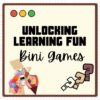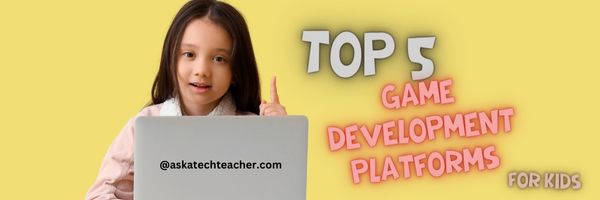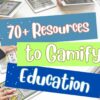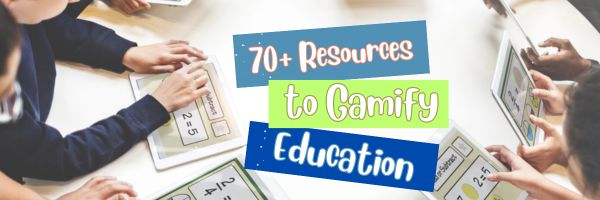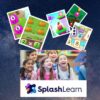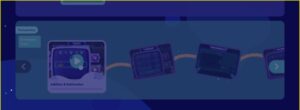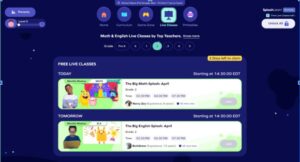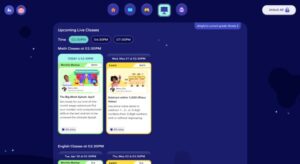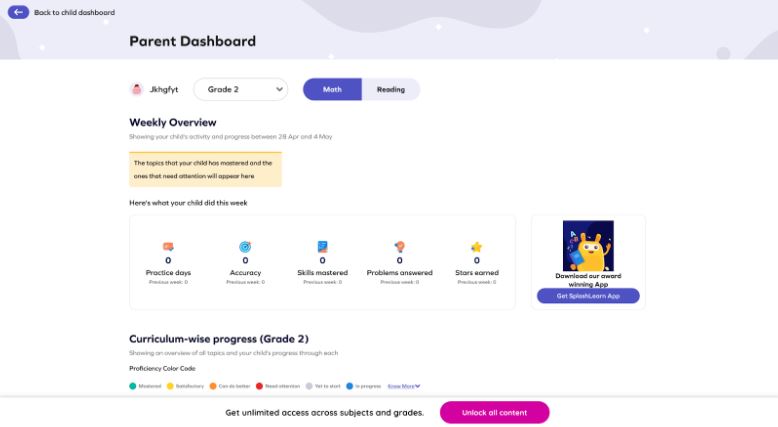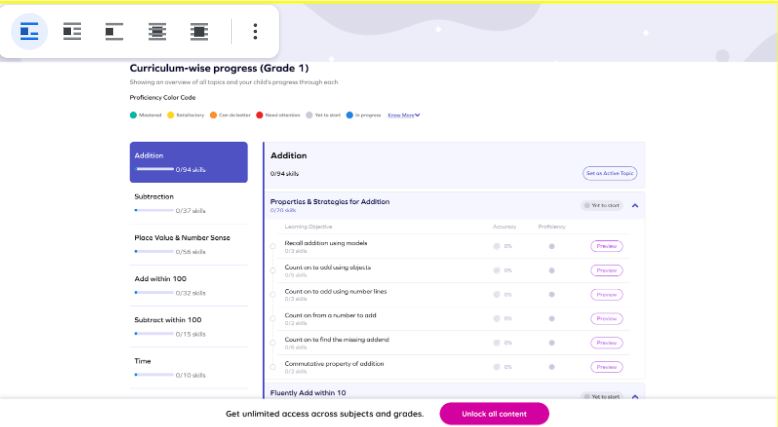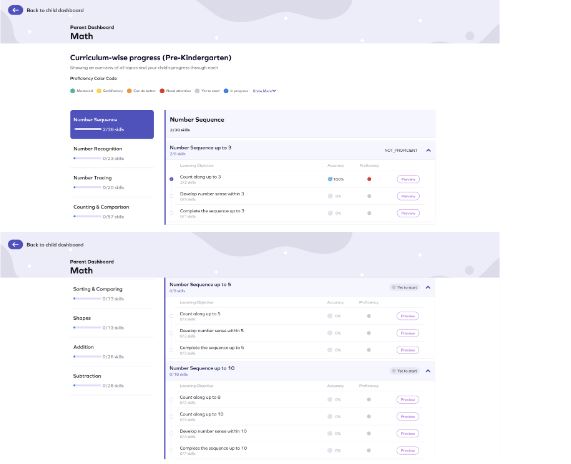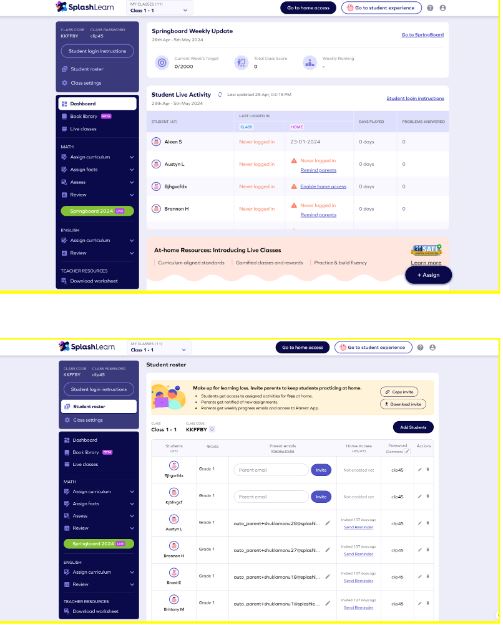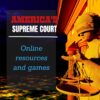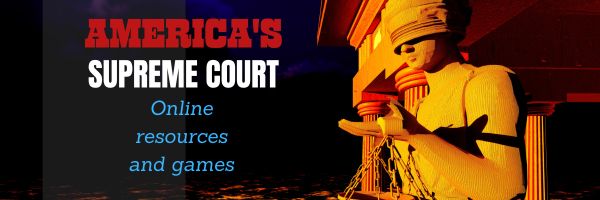Category: Games/Simulations
Online Summer Educational Activities
What are parents and teachers most worried about over the summer? That kids will lose their sharp education edge, dulled by sun and sand and something else. Worry no more.
Your cure: learning disguised as play. Kids will think they’re playing games, but are actually participating in [mostly] free simulations available in the education field. A note: some must be downloaded and a few purchased, so the link might take you to a website that provides access rather than play. Choose what works for you:
- iCivics—experience what it means to be part of a democracy
- Second Life—simulates just about anything if you can find it
- Coffee Shop—run a coffee shop business
Share this:
- Click to share on Facebook (Opens in new window) Facebook
- Click to share on X (Opens in new window) X
- Click to share on LinkedIn (Opens in new window) LinkedIn
- Click to share on Pinterest (Opens in new window) Pinterest
- Click to share on Telegram (Opens in new window) Telegram
- Click to email a link to a friend (Opens in new window) Email
- More
Unlocking Learning Fun: How Educational Bini Games Foster Child Development
If you haven’t heard of Bini Games, you’re not alone. When they contacted me about sharing their website with my readers, I checked it out and agreed it was a great idea. Their offerings are designed to support multiple facets of child development through engaging, interactive, and fun gameplay. Here’s a more detailed peek into how they assist cognitive growth, critical thinking, and creativity:
Unlocking Learning Fun: How Educational Bini Games Foster Child Development
Parents and caregivers help children learn and grow by actively engaging and promoting their growth. In this regard, a similar kids learning game is an excellent choice because they provide a fun-focused opportunity to observe a child’s development.
While games may appear easy on the surface, they provide a variety of educational benefits that can help a child develop cognitive flexibility, reactivity, coordination, and numeracy. As a result, in this blog, we will look at the intrinsic values of learning games and how they might help with cognitive growth.
Engaging Young Minds: The Power of Educational Bini Games for Cognitive Growth
Cognitive development develops at a surprising rate during a child’s early years. Now that we’ve covered the basics, let’s look at how these activities affect specific cognitive skills:
Enhancing Memory and Attention
During play, children frequently have to memorize details, sequences, and rules. This improves their memory and attention span, which are both necessary for academic performance and daily life.
Promoting Problem-Solving and Critical Thinking
Play inherently includes challenges and impediments, which allow youngsters to solve problems and think critically. Whether they’re figuring out how to build a stable tower of blocks or how to outwit an opponent in a game, youngsters learn critical problem-solving abilities that will serve them well throughout their lives.
Supporting Language Development
Whether they are discussing their thoughts, describing their acts, or conversing with their playmates, children frequently use language to communicate during play. They get better grammar, increase their vocabulary, and strengthen their ability to express themselves clearly as a result.
Fostering Creativity and Imagination
Play is a creative expression that comes naturally. Children are encouraged to think creatively and experiment with new concepts via activities like role-playing, painting, and building buildings. Children can experiment with many roles and situations through imaginative play in particular, which fosters the development of a flexible thinking and a rich inner world.
Conclusion: How to Pick the Game That Enhances Creativity, Problem-Solving, and More!
Play is essential to children’s learning and development; it is not only a respite from education. Since each child is unique, what interests one may not interest another. Because of this, it’s fantastic to have a wide variety of educational Bini Games to pick from, allowing you to find the ideal one for your child’s particular interests. Children who participate in various forms of play acquire cognitive abilities that are critical to their success in the future. We have the ability to encourage and support these activities as adults, giving kids a strong basis for learning and growth.
Here’s the sign-up link if the image above doesn’t work:
https://forms.aweber.com/form/07/1910174607.htm
“The content presented in this blog are the result of creative imagination and not intended for use, reproduction, or incorporation into any artificial intelligence training or machine learning systems without prior written consent from the author.”
Jacqui Murray has been teaching K-18 technology for 30 years. She is the editor/author of over a hundred tech ed resources including a K-12 technology curriculum, K-8 keyboard curriculum, K-8 Digital Citizenship curriculum. She is an adjunct professor in tech ed, Master Teacher, freelance journalist on tech ed topics, and author of the tech thrillers, To Hunt a Sub and Twenty-four Days. You can find her resources at Structured Learning.
Share this:
- Click to share on Facebook (Opens in new window) Facebook
- Click to share on X (Opens in new window) X
- Click to share on LinkedIn (Opens in new window) LinkedIn
- Click to share on Pinterest (Opens in new window) Pinterest
- Click to share on Telegram (Opens in new window) Telegram
- Click to email a link to a friend (Opens in new window) Email
- More
Top 5 Game Development Platforms for Young Coders
Ask a Tech Teacher is officially on Thanksgiving break so I’m going to pop in here with two posts from our international team that just couldn’t wait:
- Top 5 Game Development Platforms for Young Coders: Building Skills with Fun–perfect for those still doing Hour of Code in December (see below)
-
From Blank Page to First Chapter: A Beginner’s Guide on How to Start Writing a Book–for the teacher-authors following Ask a Tech Teacher, a how-to primer on writing the book that rattles around in your head (click link)
Top 5 Game Development Platforms for Young Coders: Building Skills with Fun
Imagine a world where kids can bring their wildest ideas to life, creating games full of flying dragons, talking robots, and mysterious mazes. What if coding could be that fun? Well, it absolutely can be! Learning to code through game development is like having a backstage pass to the world of game creation, where kids don’t just play games—they build them!
At CodaKid, we believe coding should be as exciting as the games kids love to play. With a little guidance, young coders can learn the basics of programming, all while designing their own worlds, characters, and stories. And the best part? Game development teaches kids valuable skills like creativity, problem-solving, and persistence—skills they’ll use for life!
In this article, we’ll explore five awesome game development platforms that make learning to code as fun as a high-score screen. Let’s dive in and find the perfect platform to inspire your young game designer! (more…)
Share this:
- Click to share on Facebook (Opens in new window) Facebook
- Click to share on X (Opens in new window) X
- Click to share on LinkedIn (Opens in new window) LinkedIn
- Click to share on Pinterest (Opens in new window) Pinterest
- Click to share on Telegram (Opens in new window) Telegram
- Click to email a link to a friend (Opens in new window) Email
- More
4 Critical Pieces of Every Lesson and How to Gamify Them–the video
Gamification of Education
This video is from a series I taught for school districts. It is now available for free, here on Ask a Tech Teacher:
–summarize with NoteGPT
Summary
Jacqui Murray discusses the integration of technology in K-8 education, focusing on gamification to enhance learning.
Highlights
- 🎮 Gamification enhances learning by incorporating game elements into education.
- 💻 Keyboarding skills are essential for students in a technology-driven world.
- 📚 Vocabulary building is crucial across all subjects for comprehension.
- 🌐 Digital citizenship teaches safe online practices for students.
- 🔍 Research skills promote inquiry and curiosity in students.
- 🏗️ Games like Minecraft and Sim City can teach complex subjects effectively.
- 📈 Engaging students through games can improve retention and understanding.
Key Insights
- 🎓 Gamification is a powerful tool that transforms traditional learning into interactive experiences, making education more appealing to students. This approach fosters engagement and motivation, which are essential for effective learning.
- ⌨️ Mastery of keyboarding is critical, as students will be tested on these skills. Teaching proper keyboarding habits at an early age helps ensure students can focus on content rather than mechanics, supporting their overall academic performance.
- 🔠 A strong vocabulary is foundational for academic success. By encouraging students to decode unfamiliar words in context, educators enhance comprehension and prepare them for standardized assessments.
- 🛡️ Digital citizenship education is essential as students navigate online environments. Teaching them about online safety and responsibility ensures they can engage positively and productively in digital spaces.
- 🔍 Encouraging research and inquiry through dedicated projects like Genius Hour fosters a sense of ownership in learning, allowing students to pursue their interests and develop critical thinking skills.
- ⚙️ Education-focused games must have narrative and character development to be effective. When students engage with games that require problem-solving and critical thinking, they learn necessary academic concepts in a fun way.
- 📊 Statistics show that a significant number of people engage with games regularly. Leveraging this interest in gaming can bridge the gap between entertainment and education, creating a dynamic learning environment that resonates with students.
This video is from a series I taught for school districts. It is now available for free, here on Ask a Tech Teacher. It includes videos on: (more…)
Share this:
- Click to share on Facebook (Opens in new window) Facebook
- Click to share on X (Opens in new window) X
- Click to share on LinkedIn (Opens in new window) LinkedIn
- Click to share on Pinterest (Opens in new window) Pinterest
- Click to share on Telegram (Opens in new window) Telegram
- Click to email a link to a friend (Opens in new window) Email
- More
70+ Online Resources to Gamified Education
Here are popular online resources to teach about using games in education (click here for updates to the list):
- Battleship on Google Sheets
- Breakouts by BreakoutEdu.com — a bit like Webquests but more comprehensive
- Breakout Room Template
- Game Show Templates–Frazzle, Jeopardy, Family Feud, Price is Right, more
- Gamified Syllabus–a template to create games
- A Google A Day
Economics and Finance
- BizKids–games to teach business and finance
History
- Beat the Bard–using Shakespearean characters
- Classtools History Timeline Game–read here for directions
- Oregon Trail–a browser-based edition
- Digital Breakouts–review or assessment in a gamelike format; includes mostly history, but other topics; high school
Math
Share this:
- Click to share on Facebook (Opens in new window) Facebook
- Click to share on X (Opens in new window) X
- Click to share on LinkedIn (Opens in new window) LinkedIn
- Click to share on Pinterest (Opens in new window) Pinterest
- Click to share on Telegram (Opens in new window) Telegram
- Click to email a link to a friend (Opens in new window) Email
- More
Why Use SplashLearn in Class?
Ask a Tech Teacher occasionally reviews an education website that caught our eye and seemed to have excellent value for readers. Today, it’s SplashLearn. Here’s an easy-to-read bullet list of what we found:
Platform:
Overview:
SplashLearn is an innovative online learning platform tailored for PreK through Grade 5 kids. With a global reach engaging over 45 million children and 446k teachers, it ingeniously blends the excitement of gaming with the rigor of academic learning; the platform ensures that each session is not only engaging but also deeply educational.
Cost:
- Parents: SplashLearn offers a 7-day free trial, allowing parents to explore its features before committing to a subscription. Subsequent plans start at $7.50/month. You can get started here!
- Teachers: For teachers, SplashLearn is completely free. It includes access to thousands of educational resources without hidden costs or permissions. You can get started here!
Age Group and Subjects:
- Parents: SplashLearn offers Math and Reading curriculum from PreK through Grade 5 for parents.
- Teachers: SplashLearn’s curriculum spans Kindergarten to Grade 5 for Math and Kindergarten to Grade 2 for Reading.
What SplashLearn Offers:
Parents:
- Daily Learning Path: Parents can customize bite-sized daily lessons to fit their child’s schedule.
- Curriculum Alignment: SplashLearn aligns closely with school curricula, reinforcing classroom learning with games and activities.
- Engagement: Interactive content, vibrant colors, and engaging gameplay keep children interested in learning and something for children look forward to.
- Rewards: To further motivate learners, SplashLearn incorporates rewards like coins and access to non-curricular games. These games include puzzles and quizzes that enhance critical thinking skills and offer a fun break from traditional learning.
- Content Types:
- Games: Each educational game on SplashLearn is crafted to strengthen understanding and practice new skills, ensuring that children grasp concepts while having fun.
- Worksheets: An expansive collection of worksheets is available, covering every imaginable skill necessary for school success. These worksheets serve as excellent reinforcement tools.
- Live Classes: Children can learn from expert tutors in live classes that go beyond the standard curriculum, offering advanced learning opportunities and helping students stay ahead. Read more about it here.
- Multiplayer Games: These allow children to challenge and compete with friends, adding a social element to learning that can boost engagement and motivation.
Teachers:
- Compatibility with Other Tools: SplashLearn integrates seamlessly with Google Classroom and Clever, simplifying data import and saving teachers time.
- Free 11,000 Worksheets: Over 11,000 free worksheets across various subjects and levels are available to support teaching.
- Free Assignment Access for Home: Assignments can be accessed at home, enhancing learning continuity between school and home.
- Teacher-Referred Discounts for Parents: Teachers can extend subscription discounts to parents.
- Lesson Plans and Teaching Tools: Detailed lesson plans and tools align with educational standards to aid effective teaching.
Screenshots
- Parents
- Teacher:
How SplashLearn Works for Parents:
- Personalization: From the moment you sign up, SplashLearn customizes the learning experience based on your child’s educational level and preferences through an initial onboarding questionnaire, ensuring content matches their abilities and goals.
- Research-Based and Expert-Designed Content: Developed from educational research, SplashLearn’s curriculum and games align with academic standards, target misconceptions, and include scaffolding to support learners and foster deep understanding.
- Live Classes: Led by expert tutors, SplashLearn’s live classes range from basic practice to advanced explorations, plus creative “out-of-the-box” sessions. These help students advance beyond standard curricula and encourage creative application of knowledge.
- Adaptive Algorithm: A robust adaptive algorithm analyzes your child’s interactions and progress, adjusting content difficulty and type in real-time to match their pace and skill level for an optimal learning challenge.
- Detailed Reports: Detailed reports provide insights into your child’s activities and achievements, outline mastered skills, and recommend future learning steps.
Tips and Suggestions for Using SplashLearn:
- Access to All Grades PreK to Grade 5: SplashLearn allows you to adjust the learning level based on your child’s needs. Whether your child is gifted and needs more challenging material or has special needs and requires a slower pace, you can tailor the content by setting them at an appropriate grade level.
- Integration with Google Classroom and Clever: For schools using Google Classroom or Clever, SplashLearn integrates smoothly with these platforms, ensuring a consistent learning environment between school and home.
- Free Teacher-Recommended Content: Teachers can recommend specific SplashLearn content that students can access at home without charge.
- Automatic Assignments: With just one click, SplashLearn activates assignments, simplifying the process and saving time.
Pros and Cons:
Pros:
- Parents can try SplashLearn for free before committing to a subscription.
- It is completely free for teachers.
- The platform is aligned with educational standards.
- Integrates seamlessly with classroom management tools.
Cons:
- SplashLearn does not currently offer an ELA curriculum for Grades 4 and 5 for teachers.
Closing Remarks on SplashLearn
In conclusion, SplashLearn is a standout educational platform that effectively merges the excitement of gaming with the rigor of structured learning. Despite the minor drawbacks, SplashLearn’s benefits—such as its adaptability and the broad spectrum of engaging content—significantly outweigh these issues. Whether you’re seeking to enrich your child’s educational journey or find supportive classroom instruction tools, SplashLearn is an excellent choice for enhancing learning outcomes and making education fun and impactful.
–Image credit for some–Deposit Photo
Here’s the sign-up link if the image above doesn’t work:
https://forms.aweber.com/form/07/1910174607.htm
“The content presented in this blog are the result of creative imagination and not intended for use, reproduction, or incorporation into any artificial intelligence training or machine learning systems without prior written consent from the author.”
Jacqui Murray has been teaching K-18 technology for 30 years. She is the editor/author of over a hundred tech ed resources including a K-12 technology curriculum, K-8 keyboard curriculum, K-8 Digital Citizenship curriculum. She is an adjunct professor in tech ed, Master Teacher, webmaster for four blogs, CSTA presentation reviewer, freelance journalist on tech ed topics, contributor to NEA Today, and author of the tech thrillers, To Hunt a Sub and Twenty-four Days. You can find her resources at Structured Learning.
Share this:
- Click to share on Facebook (Opens in new window) Facebook
- Click to share on X (Opens in new window) X
- Click to share on LinkedIn (Opens in new window) LinkedIn
- Click to share on Pinterest (Opens in new window) Pinterest
- Click to share on Telegram (Opens in new window) Telegram
- Click to email a link to a friend (Opens in new window) Email
- More
12 Online Resources About Puzzles
National Puzzle Day is celebrated on January 29th each year. It’s a day dedicated to enjoying and solving puzzles of all kinds, including jigsaw puzzles, crosswords, Sudoku, and various other brain teasers. Puzzle enthusiasts often use this day to engage in their favorite puzzle-solving activities and share their passion with others. Whether it’s a solo endeavor or a group activity, National Puzzle Day encourages people to exercise their minds and have fun with the challenges that puzzles present. If you have any specific questions or if there’s anything else you’d like to know about National Puzzle Day, feel free to ask!
Puzzles are also a great way to practice keyboarding skills like drag-drop, click, and select.
Here are popular puzzles resources teachers are using to teach mouse skills, critical thinking, and more (for updates on this Puzzles list, click here): (more…)
Share this:
- Click to share on Facebook (Opens in new window) Facebook
- Click to share on X (Opens in new window) X
- Click to share on LinkedIn (Opens in new window) LinkedIn
- Click to share on Pinterest (Opens in new window) Pinterest
- Click to share on Telegram (Opens in new window) Telegram
- Click to email a link to a friend (Opens in new window) Email
- More
The Supreme Court in America
When you think of the Supreme Court, you think of old people in black robes that dispassionately determine the fate of the country’s laws. That’s all true, but there’s more to maintaining law and order than a podium and a gavel. The Supreme Court is the apex of one of three branches in the American government:
- The Legislative (the House and the Senate) passes laws
- The Executive (the President) executes the laws
- The Judicial (all courts in the United States) judges whether laws abide by the Constitution
The Supreme Court consists of nine individuals who are nominated by the President and voted in by the Senate. Once approved, they serve for life, the hope being that this allows them to judge apolitically, based on the merits of the case rather than political leaning. These guidelines are not without controversy but are critical to a healthy, democratic environment.
Share this:
- Click to share on Facebook (Opens in new window) Facebook
- Click to share on X (Opens in new window) X
- Click to share on LinkedIn (Opens in new window) LinkedIn
- Click to share on Pinterest (Opens in new window) Pinterest
- Click to share on Telegram (Opens in new window) Telegram
- Click to email a link to a friend (Opens in new window) Email
- More
May the 4th Be With You
 credit: https://transgriot.blogspot.com/[/caption]
credit: https://transgriot.blogspot.com/[/caption]
Share this:
- Click to share on Facebook (Opens in new window) Facebook
- Click to share on X (Opens in new window) X
- Click to share on LinkedIn (Opens in new window) LinkedIn
- Click to share on Pinterest (Opens in new window) Pinterest
- Click to share on Telegram (Opens in new window) Telegram
- Click to email a link to a friend (Opens in new window) Email
- More
11 Online Resources About Puzzles
Here are popular puzzles resources teachers are using to teach mouse skills, critical thinking, and more. There are a few for the upcoming St. Patrick’s Day:
- Digipuzzles–great puzzles for geography, nature, and holidays
- I’m a Puzzle–create your own puzzles
- Jigsaw Explorer
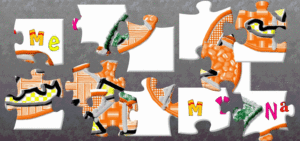 –make your own
–make your own - Jigsaw Planet–create your own picture jigsaw
- Jigsaw puzzles
- Jigzone–puzzles
- Jigsaw Puzzles–JS
- Kindergarten puzzles
- Puzzle—St. Pat’s Puzzle
- Puzzle—drag-and-drop puzzle
- Puzzle—St. Pat’s slide puzzle
Copyright ©2023 usna.wordpress.com – All rights reserved.
Jacqui Murray has been teaching K-18 technology for 30 years. She is the editor/author of over a hundred tech ed resources including a K-12 technology curriculum, K-8 keyboard curriculum, K-8 Digital Citizenship curriculum. She is an adjunct professor in tech ed, Master Teacher, webmaster for four blogs, an Amazon Vine Voice, CSTA presentation reviewer, freelance journalist on tech ed topics, contributor to NEA Today, and author of the tech thrillers, To Hunt a Sub and Twenty-four Days. You can find her resources at Structured Learning.
Share this:
- Click to share on Facebook (Opens in new window) Facebook
- Click to share on X (Opens in new window) X
- Click to share on LinkedIn (Opens in new window) LinkedIn
- Click to share on Pinterest (Opens in new window) Pinterest
- Click to share on Telegram (Opens in new window) Telegram
- Click to email a link to a friend (Opens in new window) Email
- More



